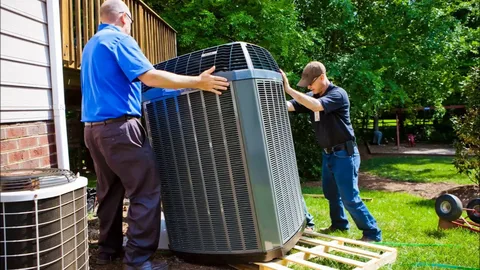Ventilation is exchanging indoor air with fresh outdoor air to improve indoor air quality. It addresses humidity control, odour elimination, and pollutant removal. Key elements include fans, vents, and ductwork, each contributing to effective air movement. Natural ventilation relies on passive airflow, while mechanical ventilation utilizes fans and ducts. Exhaust systems remove stale air, supply systems introduce fresh air, and balanced systems do both. Climate, home size, and specific room needs influence system choice. Understanding these fundamentals is crucial for creating a comfortable and healthy living space.S
Varieties of Home Ventilation System Design
Home ventilation systems are crucial in maintaining indoor air quality and comfort. These systems fall into two broad categories: natural ventilation and mechanical ventilation. Natural ventilation relies on passive airflow through windows, vents, and other openings, driven by external factors such as wind and temperature differences between indoor and outdoor environments. This type of ventilation is energy-efficient as it requires no mechanical intervention, but its effectiveness can vary depending on weather conditions and the home’s layout. Natural ventilation works best in mild climates and is commonly used in homes prioritizing sustainability and energy conservation.
On the other hand, mechanical ventilation systems actively control air flow using fans, ducts, and other components. These systems are divided into three categories: exhaust, supply, and balanced. Exhaust systems are designed to expel stale, humid, or polluted air from the home. These systems are often installed in kitchens, bathrooms, and laundry areas to remove moisture, odours, and contaminants. Supply systems, in contrast, bring in fresh, filtered air from the outside, which helps to replace the stale air. These systems are beneficial in areas with good outdoor air quality, but the home needs consistent fresh air supply.
Balanced ventilation systems combine exhaust and supply functions, ensuring continuous air exchange without negative pressure. These systems help maintain optimal indoor air quality while being energy-efficient by managing the airflow in a controlled manner. Each type of ventilation system offers distinct benefits, and the choice between them depends on factors like climate, the specific needs of the home, and environmental conditions. Understanding these differences helps select the most appropriate ventilation system to improve air quality, comfort, and energy efficiency.
Evaluating Residential Ventilation Systems
When selecting a residential ventilation system, several key factors must be carefully considered to ensure the system meets the home’s unique needs while optimizing indoor air quality. One of the most important considerations is the local climate. Homes with high humidity or extreme temperatures may require specialized systems, such as heat recovery ventilators (HRVs) or energy recovery ventilators (ERVs), which balance airflow while maintaining indoor comfort. In contrast, homes in temperate climates may benefit from simpler systems like natural ventilation or exhaust fans.
The size and layout of the home also play a crucial role in determining the proper ventilation system. Larger homes or multi-story properties may require more complex, zoned systems to ensure consistent airflow throughout the space. For example, systems that allow for independent airflow control in different rooms, such as supply and exhaust fans in key areas, might be necessary for optimal performance.
Another important consideration is the presence of moisture and odour sources. Areas like kitchens, bathrooms, and laundry rooms generate moisture, odours, and pollutants that require targeted ventilation. In such cases, exhaust ventilation systems, combined with humidity sensors, may be the best option for efficiently removing excess moisture and odours while maintaining overall air quality in the home.
Principles of Residential Ventilation System Design
Energy efficiency and sustainability are fundamental principles in designing residential ventilation systems, as they help reduce environmental impact while minimizing operational costs over time. By prioritizing energy-efficient systems, homeowners can lower their utility bills while contributing to a greener, more sustainable environment. This is achieved through innovative design features such as energy recovery ventilators (ERVs) and heat recovery ventilators (HRVs), which optimize the use of indoor air while reducing the need for excessive heating or cooling, ensuring that energy consumption remains low.
Compliance with building regulations is crucial during the design and installation of residential ventilation systems. Adhering to local codes guarantees that the system is safe and ensures its efficiency and effectiveness. Regulations often specify airflow rates, ventilation capacity, and energy standards, and meeting these requirements contributes to the system’s long-term performance.
Using high-quality materials and advanced technologies further enhances the performance and durability of residential ventilation systems. Durable components are essential for reducing maintenance needs and ensuring the system functions effectively over its lifespan. In addition, advanced technologies such as variable speed motors and smart controls provide greater efficiency and customization, allowing the system to adapt to varying household needs and external conditions, such as changes in weather or occupancy levels.
Finally, it is crucial to consider ease of maintenance during the design phase. A system designed for easy access to filters, motors, and ducts will lower upkeep costs and help extend the system’s lifespan. Regular maintenance, such as cleaning filters and checking ducts for blockages, ensures the system continues to operate efficiently and effectively for years to come.
Choosing Residential Roof Ventilation System Equipment
Selecting the right equipment for a roof ventilation system involves evaluating fans, vents, and filters that meet specific requirements. Consider factors such as airflow capacity, energy efficiency, and noise levels. High-quality materials ensure durability and reduce maintenance needs. Some advanced systems offer variable speed controls and smart connectivity, enhancing performance and convenience. Additionally, compatibility with the existing structure and ease of installation are essential aspects to consider. Properly chosen equipment contributes to the overall effectiveness of the ventilation system, providing a comfortable indoor environment and optimizing energy use.
Designing and Arranging Ductwork for Residential Roof Ventilation Systems
Effective ductwork design and arrangement are crucial for optimizing air distribution in residential roof ventilation systems, as they directly impact the system’s overall performance, energy efficiency, and comfort levels within the home. The planning phase of ductwork involves mapping the shortest and most efficient routes for duct placement to minimize pressure drops and airflow resistance. This careful design helps to ensure that the air reaches all areas of the home without unnecessary strain on the ventilation system, enhancing its efficiency and reducing energy consumption.
Properly sized ducts are essential for maintaining balanced airflow throughout the home. Choosing the correct duct size, based on the home’s layout and ventilation needs, ensures that air is evenly distributed across different rooms or zones. Undersized ducts can lead to high pressure and reduced airflow, while oversized ducts may waste energy and result in inefficient system operation. Customizing the duct sizes according to the home’s unique layout ensures optimal airflow and prevents these inefficiencies.
High-quality insulation significantly maintains the system’s efficiency by reducing duct energy loss. Insulating the ductwork helps to prevent heat exchange between the air inside the ducts and the surrounding environment, ensuring that the air remains at the desired temperature and minimizing the need for additional heating or cooling. Additionally, incorporating sound-dampening materials into the ductwork can significantly reduce noise levels generated by the system. This is particularly important for maintaining a quiet and comfortable living environment, as ventilation systems sometimes produce unwanted noise.
Installing Residential Roof Ventilation Systems
Installing the installation requires thorough site preparation and ensuring all necessary materials and tools are on hand. Safety measures, such as wearing protective gear and securing ladders, must be strictly followed to prevent accidents. Correctly positioning the ventilation components, including fans and vents, is crucial for optimal performance. Ensuring all electrical connections are secure and adequately insulated reduces the risk of faults. Using appropriate fasteners and sealing materials guarantees stability and airtightness. After securing the system, conducting preliminary checks to confirm proper operation is essential. Consistent attention to detail throughout the installation ensures the system functions efficiently and meets all performance expectations.
Testing and Adjusting Residential Ventilation Systems
Testing post-installation ensures the ventilation system functions optimally. Measure airflow rates, check for leaks, and confirm that fans and vents are operating correctly. Balancing the system might involve adjusting dampers or fan speeds to achieve uniform air distribution. Monitoring noise levels can also indicate if adjustments are needed to minimize disruptions. Conducting these checks helps identify areas needing fine-tuning, ensuring efficient performance. Employing specialized tools, such as anemometers and manometers, can provide precise measurements, aiding in accurate adjustments. Regular monitoring post-adjustment ensures the system maintains its performance over time.
Upkeep and Problem-Solving in Residential Roof Ventilation Systems
Regular upkeep ensures a ventilation system remains efficient. Inspections should focus on identifying blockages and mechanical wear and ensuring components like fans and filters are clean and operational. Addressing mechanical failures promptly can prevent more significant issues. Lubricating moving parts, checking electrical connections, and replacing worn-out components extend the system’s lifespan. Monitoring energy consumption can also indicate if the system requires attention. Employing a maintenance schedule helps keep the system in peak condition, while troubleshooting guides can assist in diagnosing and resolving minor issues swiftly. Regular professional assessments ensure thorough upkeep and optimal performance.
Developing a home ventilation system starts with a solid grasp of ventilation basics and choosing the appropriate system type. Key design principles involve energy efficiency, regulatory compliance, and material quality. Proper equipment selection, thoughtful ductwork design, and precise installation are critical. Regular upkeep and thorough testing are necessary to maintain system efficiency and ensure a comfortable and healthy indoor environment. A well-designed ventilation system can effectively enhance air quality and contribute to a sustainable living space by addressing these components.
FAQS
Why is proper home ventilation important?
Proper home ventilation is essential for indoor air quality by removing stale air, moisture, allergens, and pollutants. It helps prevent mold growth, reduces the risk of respiratory issues, and provides fresh air to create a comfortable and healthy living environment. Effective ventilation also improves energy efficiency by regulating indoor temperatures.
What are the different types of ventilation systems for homes?
There are three primary types of home ventilation systems:
Natural Ventilation: Uses windows, vents, and other openings to allow fresh air to enter and exhaust stale air.
Mechanical Ventilation relies on fans or motors to move air through ducts, providing more controlled and consistent airflow.
Hybrid Systems: Combine natural and mechanical ventilation to balance energy efficiency with fresh air supply.
How do I determine the right ventilation system for my home?
To choose the right ventilation system, consider factors such as the size of your home, the number of occupants, climate conditions, and any existing air quality concerns. Professional assessments can determine airflow needs based on insulation, room layouts, and moisture sources (e.g., kitchens, bathrooms).
What is the role of a heat recovery ventilator (HRV) or energy recovery ventilator (ERV)?
HRVs and ERVs are advanced mechanical ventilation systems that exchange stale indoor air with fresh outdoor air while retaining energy. HRVs are ideal for colder climates as they recover heat from outgoing air, while ERVs also manage humidity levels, making them beneficial in areas with more moderate or humid conditions.
How often should I maintain my home’s ventilation system?
Regular maintenance is essential for ensuring the efficiency of your ventilation system. Clean or replace filters every 3 to 6 months, inspect vents for blockages or damage, and have the system professionally serviced annually to keep everything in optimal condition
What are the energy efficiency benefits of a well-designed ventilation system?
A properly designed ventilation system can significantly improve energy efficiency by balancing air exchange and temperature control. Systems like HRVs or ERVs reduce the need for additional heating or cooling, as they transfer heat from outgoing air to incoming air, saving energy costs over time.
| Related Business Listings |
| Contact Directory |
| Local Business Profiles |


